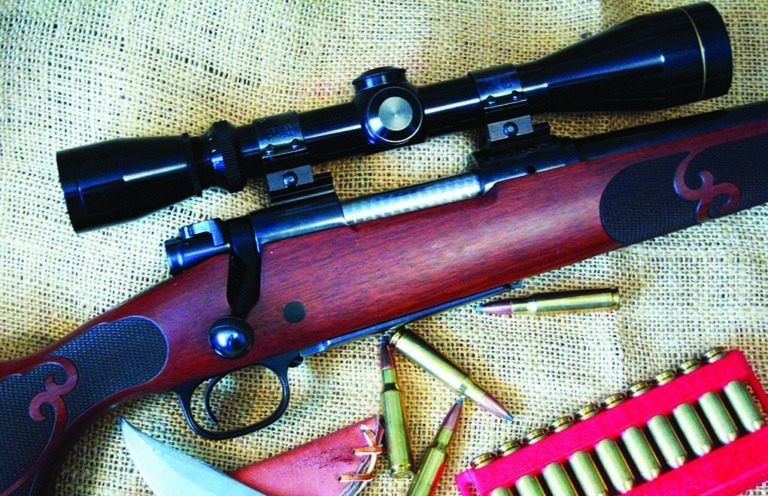
Building reduced loads can greatly expand the versatility of your favorite rifle.
Reduced Loads Tested:
There was a time when one rifle had to do it all for many shooters. The rifle that had to serve all purposes might have been a .30-06 Springfield, .30-30 Winchester or some other classic cartridge, but with it someone hunted many types of game that ranged from groundhogs to grizzly bears. The resident of a remote area might have wanted to do sustenance hunting and still have some meat after the bullet did its job. Asking one caliber to do it all was a tall order.
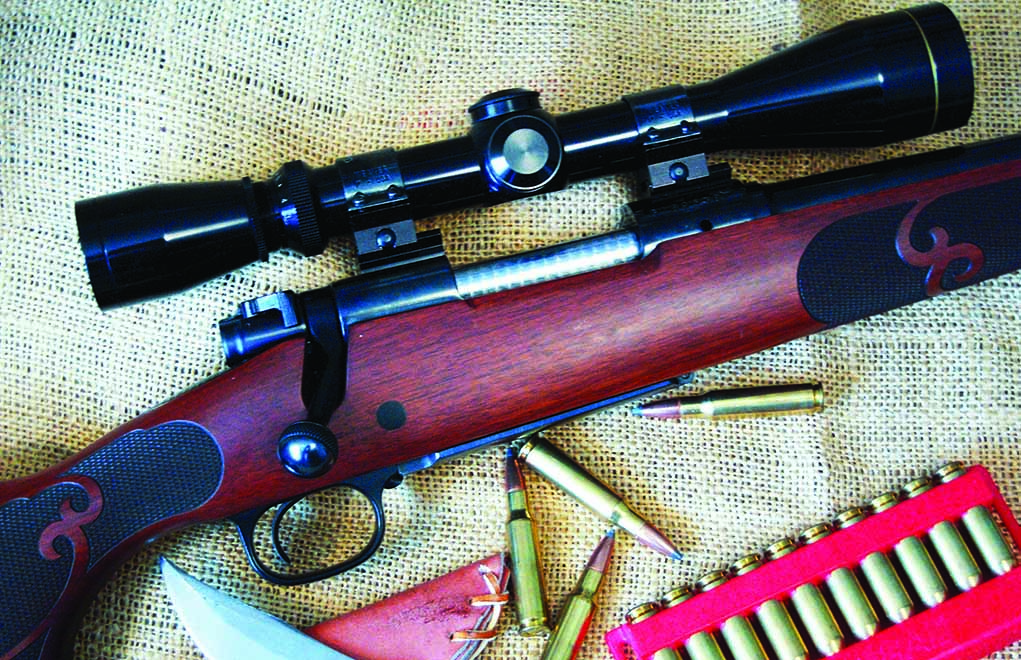
Along the way, many small cartridges, such as the .22 Hornet, .222, .223 Rem., .22-250 Remington and .243 Winchester, were introduced for use on varmints and predators. Cartridges such as the .300 Winchester, 7mm Remington and .338 Winchester magnums were developed for use on really big game. Options are good, but you don’t necessarily have to buy another rifle to have those options.
Factory loads for centerfire rifles have become much more numerous over the years, and today’s offerings are even more effective than a half-century ago. In those days, the Winchester SilverTip and Remington Core-Lokt were two of the standbys. Today, we have bonded bullets, partitions such as those from Nosler and Swift, and many other types. Various bullet types are one way to diversify the offerings of a single rifle.
But what about ammunition for use on smaller species and pests? What about using that big-game rifle to teach a youngster how to handle such ordnance to get ready for that first hunt? Full-power loads are overkill for such uses, but there’s an answer: reduced loads.

Several manufacturers have introduced loads of lower power and recoil in such cartridges as .30-30 Win., .30-06, .270 Win., .308 Win., 7mm Magnum and others, but they are still of sufficient power that they are suitable for hunting species as large as deer. The focus here is on light loads as distinguished from those that still generate about half to two-thirds the power of full-power versions.
The Science Of ‘Smaller’
Making reduced loads is not as simple as just using a smaller quantity of the same powder used in making full-power loads. That situation is reported to sometimes result in a phenomenon known as “detonation,” which can lead to at least destruction of the firearm — or worse. Detonation is considered to be a possibility when smaller than normal charges of relatively slow-burning powders are used in cases that have large volumes for the bore diameter. So, one should never try to produce reduced loads by simply using a small quantity of a usual propellant employed for full-power loads — and that means a different strategy is called for.
More Ammunition Articles:
- If You Had To Pick Just One Cartridge, What Would It Be?
- Ammo Brief: The .280 Ackley Improved
- Choosing .38 Special Ammo For Self-Defense
- Self-Defense: .357 SIG And .357 Magnum Ammo Considerations
- Ammo Brief: The Blistering Hot 30 Nosler
If you consult loading manuals from the first half of the 20th century, you will see that most of them list loading data for developing loads that give bullet velocities about half those of full-power loads. The general pattern was to pair a bullet that’s relatively light for the caliber and a rather small charge of a powder having a relatively fast burning rate.
The undisputed classic reference is that by Philip B. Sharpe, The Complete Guide To Handloading, 3rd Ed. (Funk & Wagnalls Company, New York, 1953). The subtitle to that classic is, “A Treatise on Handloading for Pleasure, Economy, and Utility” — and to that could be added “versatility.” In that book, Sharpe described his use of a .30-06 Springfield rifle with a bullet intended for use in a .32-20 loaded to a velocity of approximately 1,800-2,000 fps as an effective varmint load.
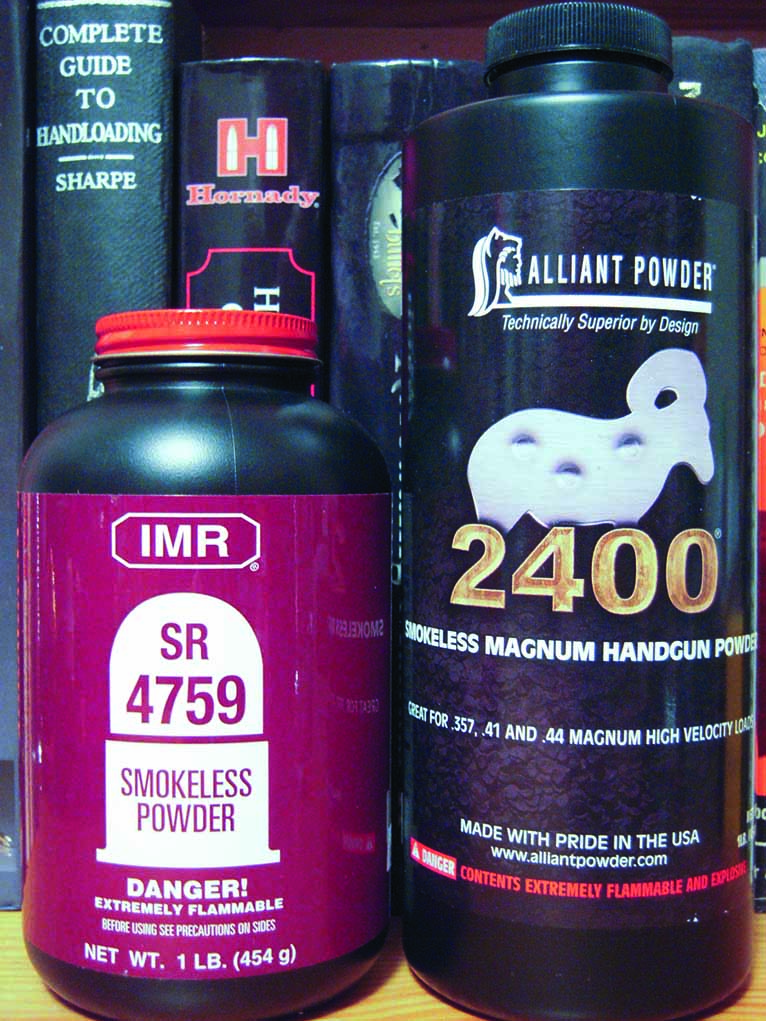
Assembling reduced loads can cause disaster for the careless reloader. The powder charges are small enough that it’s possible to get two or even three charges in the large case of a centerfire rifle cartridge. The powders used normally have burning rates that make them suitable for use in handgun ammunition — perhaps that’s the reason most modern loading manuals list few or no reduced loads.
Searching the internet will bring up a lot of correspondence that generate a lot of heat … but little light. There are those who claim that they have witnessed such loads blowing up rifles with regularity, but during the past century or more, an enormous number of such loads have been fired without incident. After all, in many cases such loads duplicate those that make use of cast bullets, and shooting such loads has been a noble passion for a very long time. I suspect that in instances where something unwanted happens, the loader became careless.
Proceed With Caution
Preparing reduced loads demands a high level of prudence and caution. I use the same procedure as that employed in preparing full-power loads. I start with the empty cases inverted in the loading block. After the powder charge is weighed, it’s placed in the case and immediately I place a bullet in the mouth of the case. Following that procedure for every cartridge makes getting two charges in a case impossible. I never engage in the folly of having a bunch of cases containing powder charges with the mouths open in a loading block.

Space here does not permit giving details of results obtained with reduced loads in numerous cartridges, so I will deal with only some experiments with .30-06 Springfield, .308 Winchester, .30-30 Winchester and .223 Remington.
Although Alliant (formerly Hercules) 2400 has long been a favorite powder for preparing reduced loads, probably the best choice today is Accurate 5744, which is a low-density propellant that occupies a larger volume in the case. IMR 4227 and 4759 are also favorites, and in recent years Hodgdon’s Trail Boss has also become popular. Although intended for normal loads in small cases, such as the .222 Remington, IMR 4198 is a versatile powder for producing reduced loads in larger cases.
.30-06 Springfield
One of my early experiments was to try to duplicate the .30-06 load described in Sharpe’s book on p. 262: “Years ago, when the author was a ‘one-gun’ handloader, his favorite chuck and crow load in the .30/06 was a Winchester .32/20 soft-point 115-grain bullet loaded to about 1700 f/s.” For that load, Sharpe used a powder that’s long been out of production. Searching the tables in Sharpe’s book showed that a charge of approximately 20-22 grains of Alliant 2400 should be appropriate when used with the 110-grain Speer flat hollow-point bullet. When fired across my chronograph placed 10 feet from the muzzle, the indicated velocity was 2,108 fps, and at 50 yards a five-shot group measuring 0.96-inch was obtained.
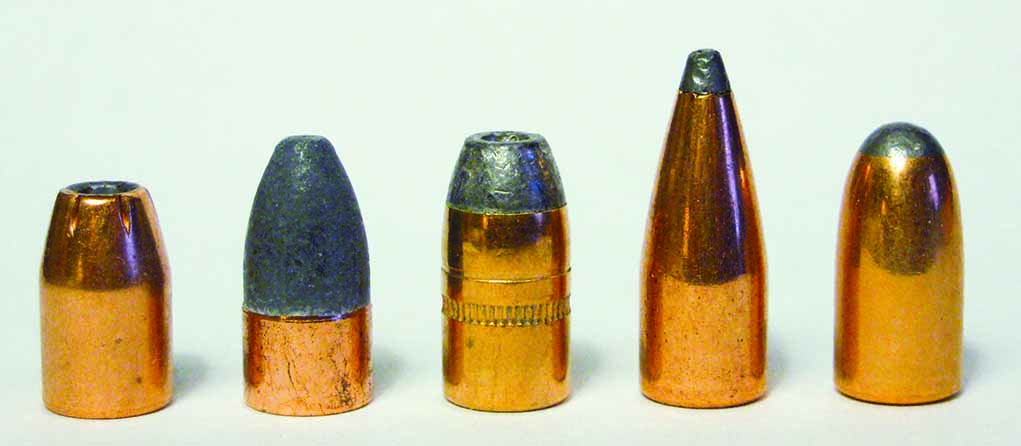
Using the same powder charge with the 110-grain Speer round-nose bullet gave a velocity of 2,154 fps, a value that differs only 6 fps from that listed in Sharpe’s book published about 65 years ago. Sharpe used a rifle having a 24-inch barrel, whereas my Remington 700 has a 22-inch barrel, and different components were used. Would such loads work well on called in coyotes? Absolutely.
My next load for the .30-06 consisted of the 110-grain Speer round-nose bullet propelled by a charge of 24.0 grains of IMR SR 4759 using the same cases and primers as before. This load gave an average velocity of 2,121 fps with a standard deviation of 21 fps. Five of those bullets resulted in a five-shot group at 50 yards measured 0.71-inch, which is sufficiently accurate for a varmint load to be used at ranges up to 100-125 yards or so.
.308 Winchester
In the .308 Winchester, I’ve had excellent results using a 110-grain Speer round-nose bullet and a charge of 17.5 grains of Alliant 2400. From my Winchester Model 70 Featherweight, the average velocity is 1,739 fps and groups average an inch or less at 50 yards. I can live with that.
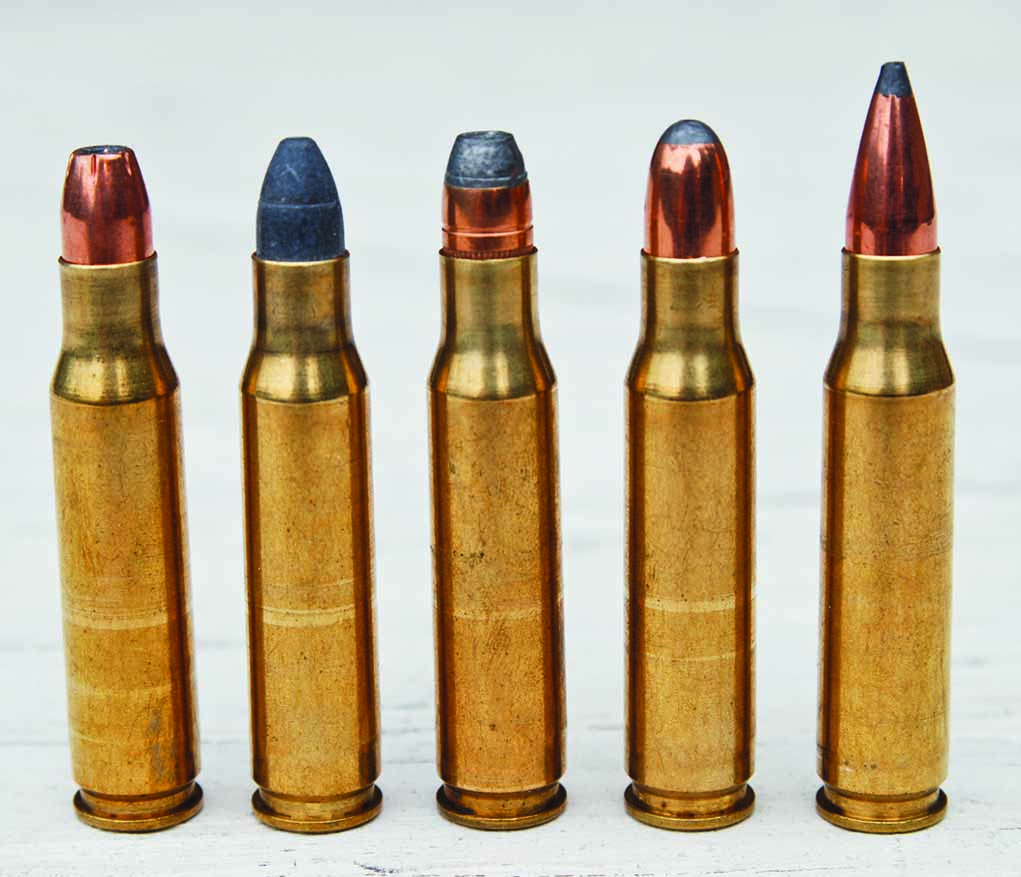
.30-30 Winchester
The .30-30 Winchester has been popular for use with reduced loads for over a century. The case has moderate capacity, and the case being rimmed prevents it from being forced forward into the chamber, which can result in cases being shortened when firing loads that do not develop high pressure. My most extensive experience with reduced loads has been with the .30-30 for several reasons, one of which is that it’s usually used at short to moderate ranges — and reduced loads perform well in that setting.
Both Hornady and Speer produce 100-grain bullets in .308-inch diameter that feature short jackets and a lot of exposed lead. These bullets are appropriate for use in reduced loads, and I’ve shot a lot of them through my .30-30 rifles. In one test, I used such a bullet with 16.0 grains of Alliant 2400, which produced a measured velocity of 1,861 fps with a five-shot group measuring less than 1 inch at 50 yards.
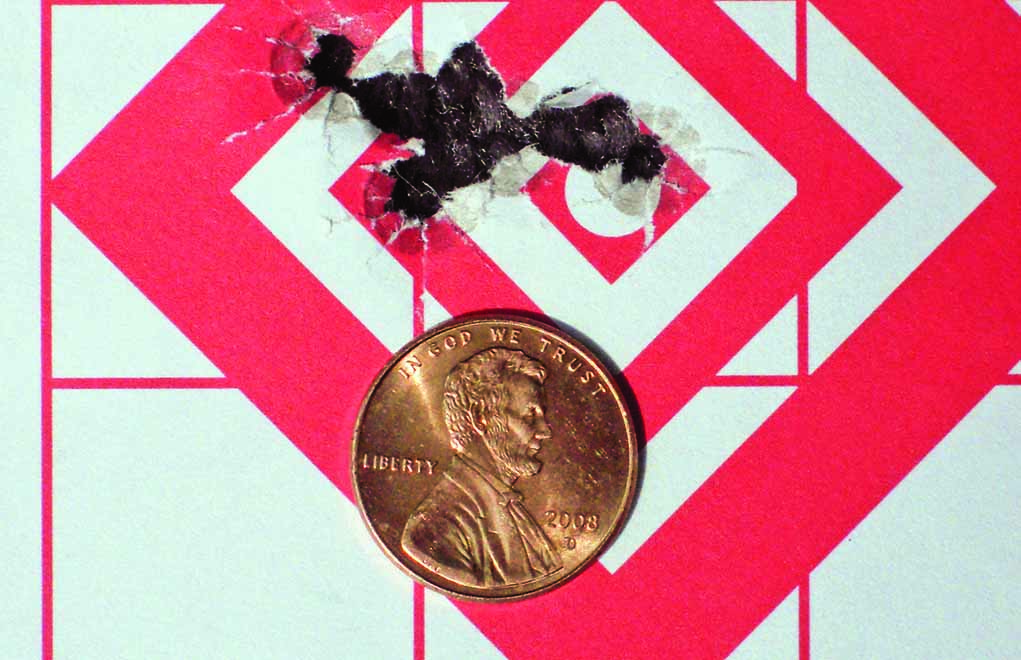
the group was produced by the author’s .308 Winchester Model 70 and indicates that the combination would be effective on varmints.
.223 Remington
Although I have used many reduced loads in the .223 Remington, my favorite consists of the 40-grain Hornady V-Max propelled by a charge of 16.0 grains of IMR 4198. That load gives a velocity of 2,363 fps in my Savage Axis and has produced groups as small as 0.58-inch at 100 yards.
If you have a favorite centerfire rifle but don’t have many opportunities to use it — or if you would simply like to experiment — reduced loads may be the answer. The subtitle, “A Treatise on Handloading for Pleasure, Economy, and Utility,” to Phil Sharpe’s book gives you all the reason you need to engage in this fascinating hobby.
Editor's Note: This article originally appeared in the July 2018 issue of Gun Digest the Magazine.

Next Step: Get your FREE Printable Target Pack
Enhance your shooting precision with our 62 MOA Targets, perfect for rifles and handguns. Crafted in collaboration with Storm Tactical for accuracy and versatility.
Subscribe to the Gun Digest email newsletter and get your downloadable target pack sent straight to your inbox. Stay updated with the latest firearms info in the industry.

![Best Concealed Carry Guns In 2025 [Field Tested] Wilson Combat EDC X9S 1](https://gundigest.com/wp-content/uploads/Wilson-Combat-EDC-X9S-1-324x160.jpg)


![Best 9mm Carbine: Affordable PCCs [Tested] Ruger Carbine Shooting](https://gundigest.com/wp-content/uploads/Ruger-Carbine-Shooting-100x70.jpg)
![Best AR-15: Top Options Available Today [Field Tested] Harrington and Richardson PSA XM177E2 feature](https://gundigest.com/wp-content/uploads/Harrington-and-Richardson-PSA-XM177E2-feature-100x70.jpg)

I processed 5 deer once. All were shot with a M94 and 170 gr. bullets. All were shot broadside with a lung shot. The expanded bullets were all found just inside the hide on the far side of the animal. With that being said I have always felt that a standard 165 gr. bullet at a little faster velocity would be a perfect lower recoil deer hunting load. The extra speed and tougher bullet would get a pass thru with a resulting blood trail. Speer makes a 165 gr. BT that expands beautifully. I am loading it with 40 gr. of Varget in my 308 Kimber Montana. Takes the “hurt” out of the lightweight rifle and is a perfect load for deer hunting. Try it you might like it.
Trail Boss?